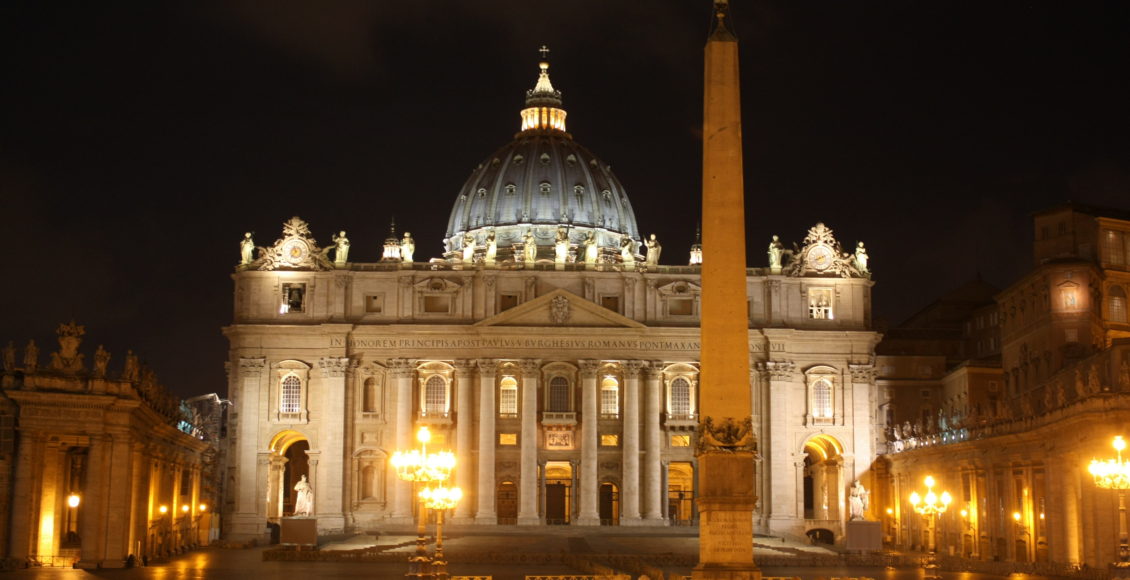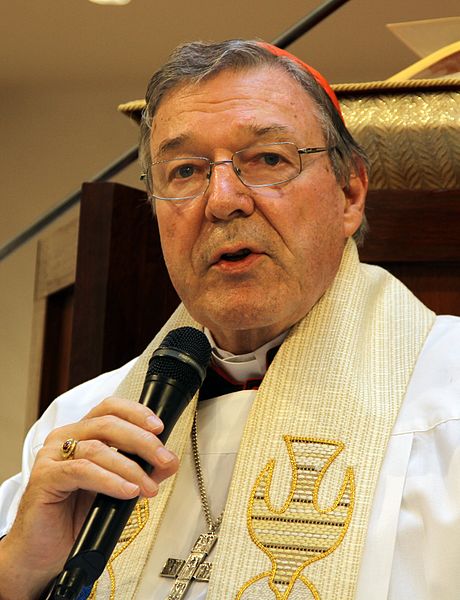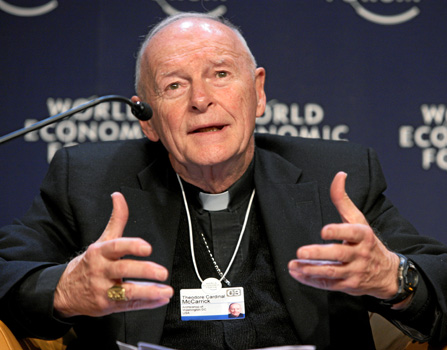Shrouded in Sanctity: Sexual Abuse in the Catholic Church

On February 21, 2019, the Vatican began its summit on the sexual abuse scandals that have shaken the Catholic Church and its followers around the globe, an act the Church believes will lead to “concrete and effective measures” to handle its extensive abuse allegations. While it is fair to keep in mind that such abuses are not confined to the Catholic Church, the crimes remain a disgrace to a supposedly moral and righteous institution. As recognized by McGill professor (and former Canadian ambassador to the Vatican) Anne Leahy, who I had the opportunity and pleasure to interview for this article, the scandals call into question the entirety of the Church, not just its moral credibility.
Though the Church’s history of sexual abuse of minors is long, the scandals came into the limelight in 2002, following the Pulitzer-winning exposé by the Boston Globe, divulging practices of hush payments and cover-ups. The revelation led the US Conference of Catholic Bishops to task the John Jay College of Criminal Justice with investigating the scandals in the US, resulting in the 2004 Nature and Scope Study, the most complete data source regarding sexual abuse in the Church thus far. Between 1950 and 2002, 4,392 priests were accused of sexual abuse, about four percent of the 109,694 clergymen in the US over that time period. Notably, of the dioceses (regional groupings of individual parishes) who participated in the study, 189 out of the 195 in the US, only six reported no incidents of sexual abuse. Still, while it was the US that thrust the issue into the spotlight through its transparency and openness, the abuses remain systematic, structural, and global, desecrating the core of the Catholic Church.
The Bureaucracy of the Catholic Church
At the most basic level, the Catholic Church’s hierarchy begins with parish priests, responsible for individual churches. These priests report to a bishop, who presides over all the parish priests in their respective dioceses. Finally, the pope in Rome heads the global Church.
Beyond this basic structure, the Vatican’s political machine is itself reminiscent of a closed bureaucracy that is, according to Professor Leahy, more chaotic and inefficient than its North American counterparts. The nature and structure of the Vatican grants strong power to individual bureaucrats, causing gridlocks and inhibiting the passage of new policies and directives. Moreover, the internal selection process of bishops is similarly problematic. Due to this in-house process, quid pro quo deals are commonplace, leading bureaucrats to turn blind eyes to wrongdoings amongst the clergy.
Past Processes of Dealing With Sexual Abuse
Prior to the Boston Globe’s exposé, Church officials have treated abuses as “an internal, supervisory matter to be handled by [bishops].” Within the Vatican, the matter fell under the Congregation for the Doctrine of the Faith (CDF), whose responsibilities include handling violations of Canon (Church) law. In the past, the Church believed it could deal with sexual abuse exclusively with Canon Law, treating it akin to a sin that required spiritual and religious treatment as opposed to the heinous crime that it truly is.

While the Church attempted to manage the abuses internally, every act and response revolved around the same goal: the protection of the Church’s image. According to Professor Leahy, an informal policy akin to omertà (the Mafia’s code of silence) became the norm. At the time of the Boston Globe’s publication, bishops were not even required to report abuses to civil authorities due to religious exemptions from state law. Rather than bringing perpetrators to justice, the rapists and abusers were simply reassigned, or in some absurd cases, even promoted. Meanwhile, priests who attempted to expose the practices were silenced by their superiors. As a result of the secretive, guarded nature of the Catholic Church, as well as its need to protect its reputation, these practices became widespread and only worsened an already deplorable situation.
Still, while society has progressed and the abuses have finally come to light, one would be hard-pressed to claim that the Church has been held fully accountable. To date, no high-ranking Church official has been incarcerated for their role in covering-up or allowing the sexual abuse of minors (though this may soon change). Moreover, many cases have exceeded their respective statutes of limitations, though some American states are extending their statutes to override this.
Though the Church has claimed it has turned the corner on its handling of sexual abuse, much work remains. The German Church is in the midst of being accused of stonewalling victims, while the Boston Globe’s publication has led to a rise of accusations throughout the globe. Thus, as Professor Leahy made clear, progress on handling sexual abuse allegations remains inconsistent within the Church due to the individual, regional contexts faced by the different sectors of the Church (such as systemic persecution of the Church).
Notable Current Cases
George Pell

Prominent Australian Cardinal George Pell was sentenced to six years in prison this month for the sexual abuse of two choir boys in Melbourne during the 1990s. Though Pell was only convicted in recent weeks, he was unanimously convicted by a jury last December, something only revealed to the public last month. Following the decision, Pell became the most senior Catholic to ever be convicted for sexually abusing children. Maintaining his innocence, Pell has appealed his conviction, which will be heard in June. However, it is worth noting that this is not Pell’s first trial. The Cardinal was first tried in August 2018 and was ultimately declared a mistrial when the jury failed to reach a verdict. The Vatican, also skeptical of Pell’s guilt, has launched its own investigations. Professor Leahy explained the Vatican’s hesitancy to condemn Pell was due to his polarizing nature. While charged with cleaning out corruption in the Vatican during his time as Vatican Treasurer, Pell amassed numerous enemies with personal vendettas. With all the uncertainty surrounding Pell’s conviction, the appeal process will be the final arbiter on Pell’s guilt.
Theodore McCarick

In June 2018, child sexual abuse allegations against former American Cardinal Theodore McCarick were deemed credible by an independent investigation and supported by the Archdiocese of New York. McCarick is alleged to have sexually abused a former altar boy, whose parents had been close friends with McCarick. Another claim was brought against McCarick this past January, while rumours of abuse during his time as Bishop in New Jersey continue to circulate. In response, McCarick claimed “absolutely no recollection” of the abuses. McCarick ultimately resigned in the face of the scandals in 2018, becoming the first Cardinal to resign since 1927. McCarick continued to make history in February after he became the most senior Catholic priest to be defrocked (dismissed from the priesthood) in the modern era. According to the Vatican, the decision is “definitive” and no appeals will be heard.
Changing Leaders: From Benedict to Francis
While both Pope Francis and his predecessor, Benedict XVI, have been subjected to major criticisms in light of the sexual abuses within the Church, the realistic power of the pontificate is, in actuality, rather limited. The sheer size and global reach of the Church, coupled with the difficulties of practical management and oversight from the Vatican, result in the independence of dioceses throughout the world. According to Professor Leahy, each pontiff differs in the extent of his control over his subordinates. Ultimately, it is his moral leadership and careful selection of his inner circle that enable the papacy to enact change.

Contrary to his successor, Pope Benedict XVI represented a more traditional and orthodox Catholicism, falling into criticisms of fostering a Church too rooted in tradition. Benedict had also been criticized for failing to act on sexual abuse during his time as Archbishop of Munich in the 1970s, criticisms which followed him to the Vatican. However, Professor Leahy, who was ambassador during his papacy, asserts that he indeed took action against sexual abuse in the church. In 2010, the Vatican changed its policy of “blaming the media for targeting abuse problems” and publicly announced its support for child abuse cases to be handled by civilian authorities. Moreover, under Benedict, Rome discovered that bishops were failing to obey Vatican directives regarding the handling of accused priests and instead had fallen back into the atrocious practice of reassigning abusers. Following this realization, Benedict brought all the bishops’ cases to Rome to personally deal with them. Still, the former pontiff failed to address the systemic and structural facets of the problem that enabled it to grow to its current proportions.

Since Pope Francis’ ascension to the papacy in 2013, the sexual abuse scandals have become the greatest crisis the pontiff has had to face. Elected on a platform of reform and progress, people around the world, Catholic and non-Catholic alike, viewed him as the modern Pope Catholicism needed. However, in spite of massive support, Professor Leahy notes that the current pontiff faced significant opposition, mostly due to cliques and money. Moreover, his Argentine roots failed to provide him the pedigree privileged to his predecessors. Similar to Benedict, Francis has been criticized for failing to act on sexual abuse during his time as bishop in Argentina. However, in 2018, Francis defended Chilean Bishop Juan Barros, a man accused of covering up sexual abuse cases for years. Francis later retracted his support of Barros, conceding that the pontiff committed “serious errors” when assessing the situation. The concession is no small matter, for no other pope has retracted a mistake in this way. Professor Leahy also described the unique situation faced by the current pontiff due to his reformative and progressive beliefs. No other pope has faced such open animosity towards him individually, thus Francis is wary and hesitant towards all information he receives. Illustrating this point, Francis has come under attack from within the Church. Notably, Archbishop Maria Vigano, a controversial man, leaked a letter claiming that Pope Francis was not only aware of McCarick’s abuses, but he also lifted restrictions on the former Cardinal that had been placed by Benedict XVI. However, Vigano’s history of ambition and self-service have caused people to question his claims. While Vigano himself may be controversial, Francis’ refusal to accept the resignation of Cardinal Philippe Barbarin of Lyon, who has been convicted of covering up cases of sexual abuse in his diocese, is cause for deliberation. Although Francis has been true to his reputation as progressive and reformative in other facets, he has yet to adequately and definitively enact alterations in the Church that will not only bring abusing priests to justice, but also prevent future abuses from occurring.
Road to Reconciliation, Redemption and Justice
With a month passing since the Vatican summit on sexual abuse, critics have asserted that nothing substantial has been announced in its aftermath. While Professor Leahy refutes this statement, she also states that, more significantly, the summit brought the global Church together to recognize the importance of the need to change and truly address the issue. With some bishops still rooted in the old, deplorable tradition of handling sexual abuses internally, the summit acted as the Vatican’s attempt to turn a new page. Furthermore, the summit attempted to ingrain the fact that such abuses are not confined to certain regions or exclusively children. Sexual abuse and raping of nuns and seminarians remain significant problems that have yet to garner the same outrage.
Ultimately, the Church requires more transparency and a revision of its current practices. With the scandals causing Catholics to question their affiliations and loyalties to the Church, it is clear that change is necessary. For instance, the eternal nature of Holy Orders (in other words, once a priest, always a priest), can inhibit the service of justice and sense of closure for victims. What are more pressing matters, however, are discerning when Rome should intervene in cases and creating mechanisms to hold bishops accountable. With Pope Francis intending to revise Canon Law to resolve these issues, it seems as though the Church has finally begun to take steps in the right direction. Nonetheless, steps in the right direction do not excuse its past failures and practices that enabled systemic and global sexual abuse. Catholics and non-Catholics alike have become frustrated with the semantics and lack of substantial action. In order for Pope Francis to truly live up to his progressive and reformative nature, the “concrete measures” promised at the summit last month must be substantial and enacted quickly; otherwise the Catholic Church may experience an exodus of a congregation tired of excuses and hypocrisy.
Edited by Helena Martin
